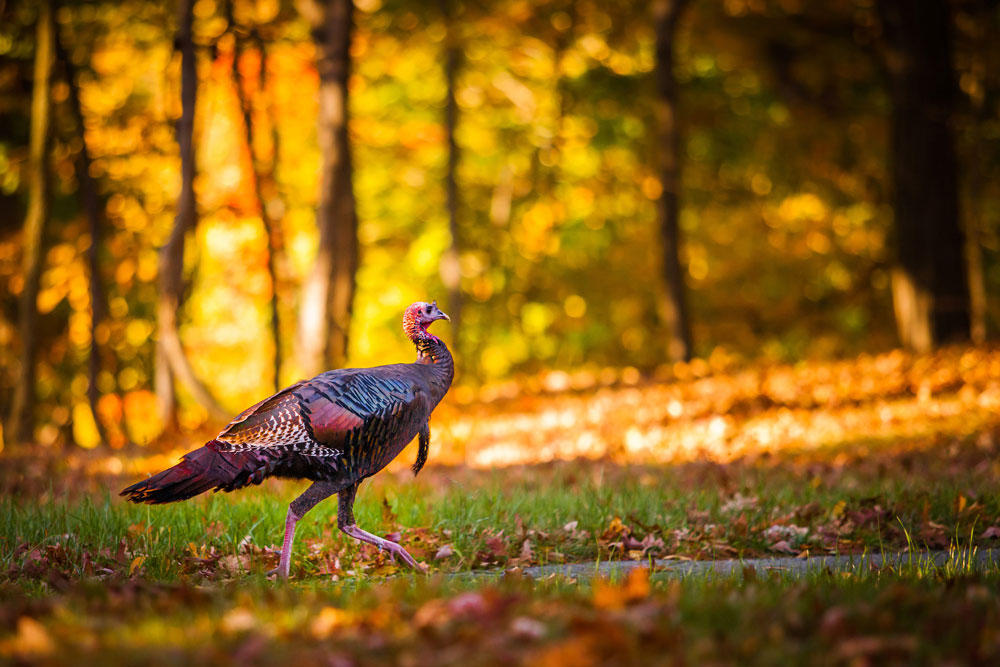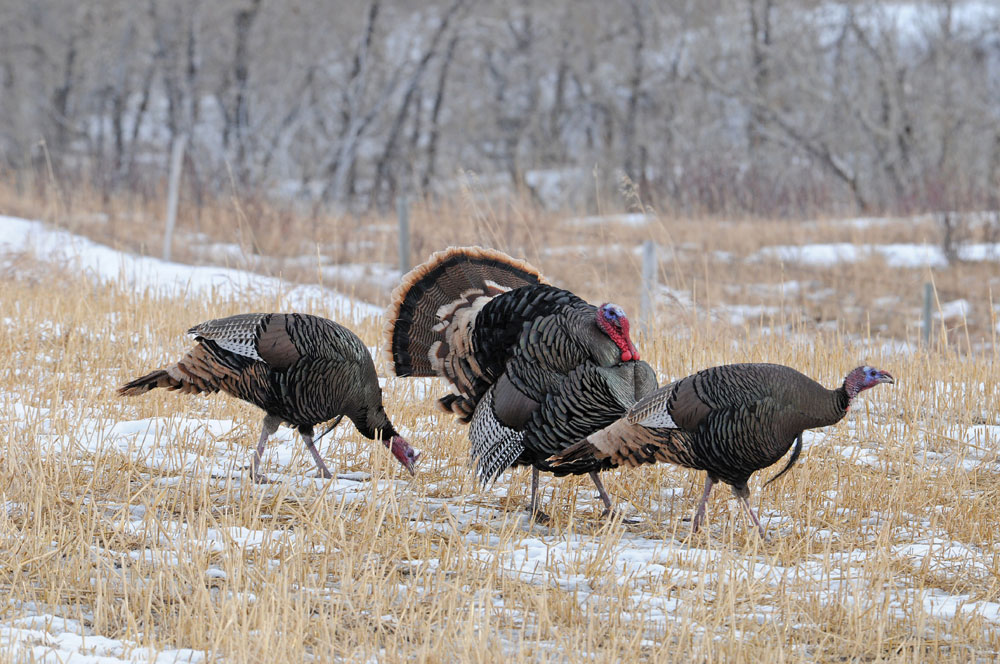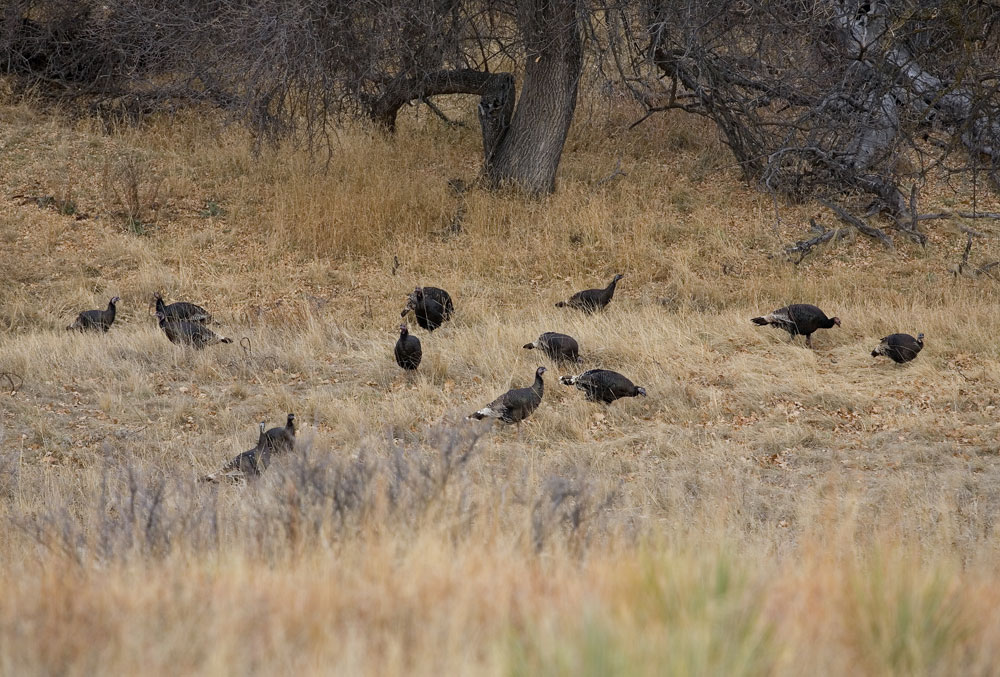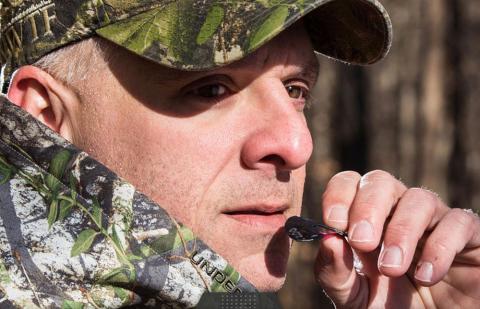Finding the perfect time to hunt is part and parcel of the hunting experience. Every hunter wants to increase their odds of success, whether by upgrading their arsenal or improving their camouflage. Fortunately, it’s also possible to improve your odds of successful turkey hunting by considering the weather and other variables.
Thanks to tremendous conservation efforts in recent years, turkeys are some of the most hunted game in North America.

Consider the Variables
For optimal turkey hunting success, take all variables into consideration. These may include precipitation, temperature, wind, time of year, time of day, and location. Weather is a significant factor in determining turkey behavior.
Precipitation: Why You Should Hunt in the Rain
Many experienced turkey hunters love hunting in the rain because turkeys enjoy eating in the rain. As moisture soaks into the ground, worms, seeds, bugs, and insects are forced to the surface.
Turkeys want to take advantage of this easy feeding, and they often let their guard down and are less cautious. The rain also helps to hinder birds’ hearing and visibility, which makes it easier for the hunter to get close. When it’s raining, turkeys are likely to be out all day, giving you even greater odds of success. Set up a blind, bring snacks, and fill up a thermos with tea or coffee to stay warm and dry while turkey hunting in the rain.
Dry, Clear and Sunny: A Different Story
When the sky is clear, the sun is shining, and visibility is at its best, you will likely encounter turkeys in the fields at crepuscular hours and in among the trees around midday. The birds will be on alert, and their eyesight will be at its sharpest due to the clear weather. They tend to be at their most vocal on clear days, as well, making them easier to find, but, since their eyesight is so keen, you are also easier to spot.

Considering Temperature
Temperature also plays a role in turkey activity, and particularly in how much noise turkeys will make over the course of a day. They tend to be the most vocal in mild temperatures—around 60-69°F—and weather that’s too cold or too balmy will slow them down. Just like humans, they prefer weather that is comfortable.
Wind and Turkey Calls
Most of us have experienced high winds that impede activity and make moving around far more difficult. Turkeys tend to feel the same: They are usually quieter on days the wind is howling. Strong winds can also impede the hunter’s ability to hear turkey calls, but, on the plus side, the turkey’s sense of hearing is also hampered.
Time of Year
Most states have a spring and fall turkey hunting season, with the spring season usually reserved for bearded turkeys only. Each state’s turkey seasons are different, but early spring and mid-fall tend to be peak times to head out on a hunt.
Turkeys and the Time of Day
Prioritize hunting first thing in the morning, if possible, because this is when turkeys start to stir from their nests on the ground and in trees. This is the first search for food of the day, so birds will be vocal and eager to move around.
Here’s the breakdown of what to expect, on average, during different hours of the day:
Morning
Where your target flock of turkeys chooses to graze in the morning can change, depending on weather conditions. It’s essential to stay mobile and respond to the changes in turkey behavior.
In the morning, you have two basic strategies: ambush or calling. With an ambush, you try to predict where the turkeys are headed and quietly wait. With calling, start off with subtle calls and try to start up a conversation. If that doesn’t work, use more aggressive calls like fighting purrs.
If you spot a pattern based on weather and location, you may (or may not) have luck in setting up a permanent blind, and then luring them in with calls. This combines the best of both strategies.
Noon
Some states have laws that limit hunting to half a day. In this instance, noon might mark the end or the beginning of your hunt.
Noon tends to see turkeys “loafing” or heading for the shadier areas to escape the midday heat—unless, of course, it’s raining, in which case all bets are off. Turkeys also tend to dust around noon to rid themselves of pests, so scout out dusting locations. As female turkeys head back to their nests to care for their young, gobblers quiet down.
Afternoon
Many of the noon-time activities carry on into the afternoon. Focus your hunting on turkey loafing areas.
Evening
Around sunset, turkeys head back to their nests after grazing as the sun sets. This predictability can be used to your advantage. However, if you want to hunt around this time of day, it’s important to take care lest you scare turkeys away from their nest and ruin future morning hunts.

Location, Location, Location
While wild turkeys can be found across the lower 48 states, they’re most prevalent in Pennsylvania, Alabama, Wisconsin, Missouri, and New York. They prefer heavily forested areas with clearings, meadows, and fields. They’re adaptive creatures and can survive in states that have experienced heavy deforestation, but they still prefer their natural habitat.
Wild turkeys like to nest on the ground and in trees, but they often move out into more open areas to find the best morning or evening grub.
Final Thoughts: The Best Time to Hunt Turkey
Of all the best turkey hunting tips, watching the weather, the time of day, and the seasons can help you make the most of your next turkey hunting trip.
While it’s wonderful to have a pick of optimal days with perfect weather for hunting, sometimes you just need to put on your gear, ready your equipment, and head outside. Chances are, you’ll be glad you did. Even unsuccessful days can teach hunters lessons for next time.



























